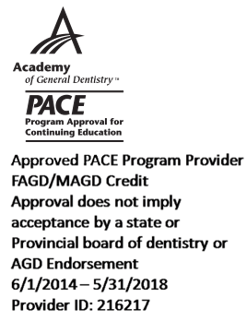Subject: 616 - Implant Restorations
Credits: 1 (Lecture)
Thursday, July 13: 2:30 to 3:30 p.m.
Fee: Free with Registration!
Location: Pool Level, Forum 1-3
Description: How can we make intra-oral cementation safer? Residual excess cement is a known risk factor for peri-implant disease, and we know that it is an all-to-common consequence of current installation techniques. I will discuss how adjacent gingiva, abutment and prosthesis deign affect the flow of excess cement as it is ejected from between the margins of the abutment and prosthesis during installation. Then I will discuss how we can control the flow of excess cement and thus prevent the problem of residual excess cement. This alone promises to reduce iatrogenic complications by 60%, as extrapolated from the work of Wilson 2008. It is not only the excess cement that can be a problem. There are a number of reports about techniques that attempt to minimize the cement volume that is ejected beyond the margins of the prosthesis. These techniques, unfortunately, do not consider the danger of creating cement voids under the prosthesis that can breed oral pathogens and thus create peri-implant disease. I will discuss a new cement application technique that minimizes the formation of cement voids and thus makes intra-oral cementation even safer.
Learning Objectives:
- Identify the iatrogenic contribution to the incidence of peri-implant disease and its resulting treatment complications.
- Understand why intra-oral cementation is still a necessary part a safer of prosthesis installation protocol.
- Understand how to control the flow of excess cement by design and procedure to prevent the occurrence of residual subgingival cement.
- Learn how to apply cement to the prosthesis and abutment during the intra-oral cementation process to avoid the problems related to cement voids at the margins of the prosthesis.




